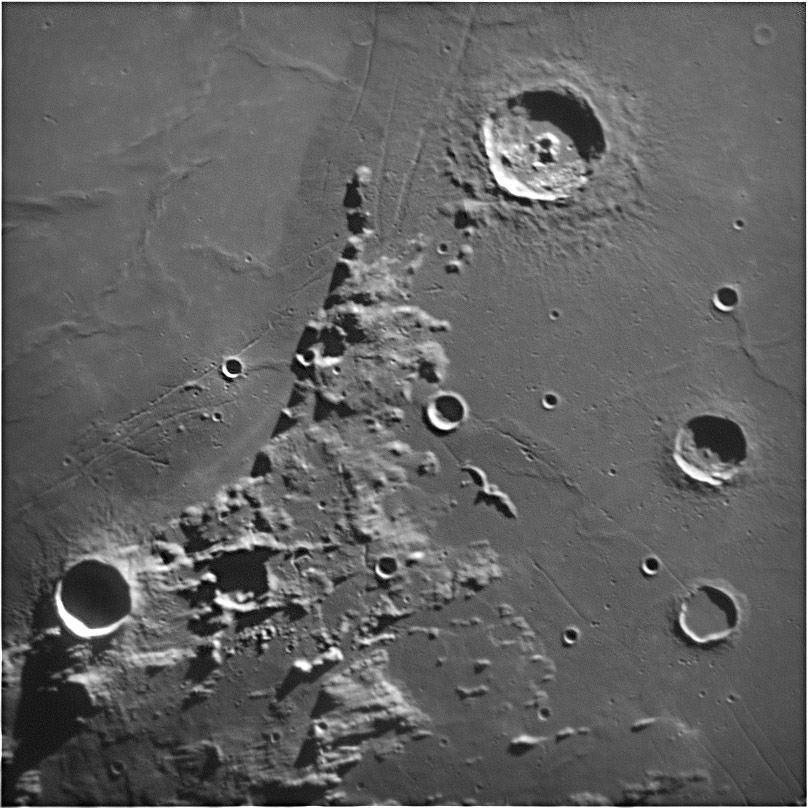June 13, 2008
Straight or Concentric?

image by Mike Wirths
Mike's back. After disappearing for six months, Mike has resurfaced in the Mexican state of Baja California, where the skies seem to be clear and his 18" Starmaster telescope is singing again. This image, with east up, is of a triple junction of rilles surrounding Promontorium Archerusia, with Plinius above all. On the left are the Menelaus Rilles, presumably formed when the load of younger mare (with the ridges) in the middle of Serenitatis, caused crustal subsidence and fractures at the mare's edges. The Plinius Rilles had the same origin. It is surprising though, that both rille sets don't curve to follow the basin rim, but rather ram right into the promontorium. Similarly, the Maclear Rilles, coming from the south, and nominally concentric to sagging mare lavas in Tranquillitatis, don't curve but also run into Prom. Archerusia. In fact, nearly all of the concentric rilles along the edges of Serenitatis and Tranquilitatis are straight - its only when looked at as a family that their concentricity is seen. I suppose the flexing of the maria at their edges creates the regional stress conditions that permit fracturing, but local, near surface conditions somehow limit the rilles to straight segments. Interestingly, the Hippalus Rilles are curved, running parallel to the presumed rim of the Humorum Basin. Perhaps their greater width indicates that they reach down to a greater depth, and are less controlled by near-surface weakenesses.
Chuck Wood
Technical Details
June 9, 2008. 18" Starmaster + 2.5 Televue barlow + Infinity 2-2 camera + red filter; processed with Registax 5 beta.
Related Links
Rükl plates 24 & 35
COMMENTS
1. Another thing I notice about this image is how the highland material has been raked in a direction that seems to be radial to Mare Imbrium. I would suppose then that Mare Tranquilitatis and Serenitatis are older than Imbrium?
COMMENTS?
Register, Log in, and join in the comments.



